
Succulents and Frost: Which Varieties Can Withstand the Chill?

Introduction
Succulents have surged in popularity in recent years, becoming beloved houseplants for many due to their unique aesthetics and low maintenance needs. Generally associated with hot and arid environments, these fascinating plants are often presumed to be sensitive to cold temperatures. However, certain varieties are surprisingly resilient and can withstand colder climates, including frost. This article delves into the intricacies of growing succulents in colder environments and identifies which varieties can thrive even when the chill sets in.
In this comprehensive guide, we will explore what makes certain succulent plants capable of enduring frost. We’ll investigate the nuances of choosing the right succulents, preparation techniques for colder months, and the ultimate care tips to ensure your frost-hardy plants continue to flourish. This information will not only enrich your current gardening knowledge but also empower you to create a stunning winter garden filled with resilient succulents.
Understanding Succulents and Frost
Succulents are distinguished by their ability to store water in their leaves, stems, or roots, aiding their survival in harsh, arid environments. This fascinating adaptation is what makes them appear so vivacious and charming; however, it raises an interesting question: Can these water-storing plants really withstand frost? The answer lies in the particular succulent varieties and how they’ve adapted to their native climates.
This article delves into specific succulent species that show the promising trait of frost resistance. With higher tolerance to cold temperatures, these varieties can withstand some light frost and even thrive in climates with limited snow. Understanding the specifics of these plants, such as their native habitats, growing conditions, and overall care, is essential to ensuring their survival during the colder months.
Interestingly, the key to understanding which succulents can withstand frost lies in their cellular structure. Some succulents have evolved mechanisms to prevent ice crystal formation inside their cells, which can cause damage. Crassulacean Acid Metabolism (CAM) is a fascinating process utilized by some of these plants, allowing them to open their pores at night instead of during the day. This adaptation helps to reduce water loss while maintaining internal moisture levels—even in chilly weather.
Frost-Hardy Succulent Varieties
Sempervivum (Hens and Chicks)
Sempervivum, commonly known as hens and chicks, is a quintessential example of a frost-hardy succulent. Native to the colder regions of Europe and the Mediterranean, these plants can survive in temperatures as low as -30°F (-34°C). Their rosette shape allows snow to blanket them, providing insulation against the harsh winter elements.
What makes sempervivum truly special is their ability to propagate effortlessly. They produce “chicks,” or offsets, that can be easily separated from the parent plant and propagated to create new individuals. Not only does this make them an attractive option for gardens, but it also gives you an abundance of new plants to enjoy every year. Additionally, hens and chicks thrive in well-draining soil and prefer full sunlight, but they can also adapt to partial shade.
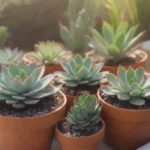 Preparing Your Succulents for Summer: Temperature Considerations
Preparing Your Succulents for Summer: Temperature ConsiderationsAnother advantage of sempervivum is its rich variety of colors and textures. With shades that range from deep green to pink, red, and even purple, they can add vibrant life and interest to any garden aesthetic. When planting sempervivum, ensure they are in a location that receives ample sunlight, and be mindful of watering practices, particularly in winter when they require less moisture.
Sedum (Stonecrop)
Another class of succulents renowned for their frost resistance is Sedum, commonly known as stonecrop. With over 400 different species, this succulent variety showcases impressive adaptability to colder climates. Some species, such as Sedum spurium and Sedum album, can survive frosts due to their hardiness and resilience.
Sedums are a great option for ground cover, thriving in poor soil conditions while enhancing the visual appeal of your garden. They feature fleshy leaves that are adept at preserving moisture, allowing them to flourish without extensive watering. This characteristic makes them especially useful for drought-prone areas, but their hardiness does not stop at drought; they can endure both dry and wet conditions.
It's essential to remember that even Sedum plants aren’t entirely frost-proof. While they can tolerate light frosts, harsh winter conditions can be detrimental if left unprotected. Providing mulch can offer an extra layer of insulation, while careful watering practices (avoiding waterlogged soil) will enhance their chances of survival during the colder months.
Echeveria
Echeveria is another substantial group within the succulent family that can withstand cooler climates. This diverse genus is known for its beautiful rosette formations and colorful foliage. Though many Echeveria varieties prefer warmer temperatures, certain frost-resistant types such as Echeveria ‘Imbricata’ demonstrate more tolerance to cold.
Echeveria generally favors sunny conditions but will require some protection during extreme frost events. To properly overwinter your Echeveria, consider bringing them indoors or to a greenhouse during the harshest conditions, enabling them to maintain their lush appearance. It’s important to keep them in a dry area to prevent rot, especially with the succulent's innate moisture storage capabilities.
While Echeveria thrives in a variety of soil types, a well-draining mix that prevents excess moisture buildup is crucial. Consider planting them in terracotta pots to promote airflow, as these pots allow evaporation of excess water, preventing rot. Echeveria produces vibrant flowers during warmer months, adding to their ornamental appeal, making them charming choices for outdoor gardens and indoor decor alike.
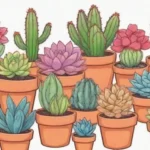 Which Succulent Varieties Are Most Heat-Resistant?
Which Succulent Varieties Are Most Heat-Resistant?Care Tips for Frost-Hardy Succulents

To successfully grow frost-hardy succulents, there are several care guidelines to keep in mind. Understanding their native habitats will set the foundation for proper care, protecting them during harsh seasonal changes. Here are some essential tips to ensure their survival and thriving:
1. Planting Location
When selecting an area in your garden, look for a location that receives ample sunlight throughout the day. Ideal conditions will promote overall health, allowing your succulents to flourish in varying temperatures. Many frost-resistant succulents can tolerate light shade, but full sunlight is preferred, especially during colder months when plants may not undergo typical photosynthesis.
Choosing an area that is protected from harsh winds can also be beneficial. Winds can worsen freezing conditions by increasing evaporation and promoting dehydration in your plants. Additionally, consider positioning your succulents near south-facing walls, which tend to retain heat and can provide a slightly warmer microclimate for your frost-hardy varieties.
2. Soil Type
Succulents thrive in well-draining soil, so it's crucial to ensure that water does not accumulate at their roots. A mix that comprises regular potting soil combined with sand or perlite can create the right balance for your plants, preventing root rot. This is especially important during the winter months when plants require much less moisture and inadequate drainage can lead to disaster.
You can also opt for commercially available cactus and succulent potting mixes that provide the ideal balance of moisture retention without compromising drainage capabilities. Additionally, adding a layer of gravel or decorative stones on top of the soil can aid in ensuring suitable airflow to the roots while also enhancing the visual aesthetics of your plants.
3. Watering Strategies
It’s crucial to adjust your watering practices as seasons change. During the growing season, maintain a consistent watering schedule to ensure your succulents receive adequate hydration. However, as winter approaches and temperatures drop, it’s advisable to reduce the frequency of watering. A good guideline is to check the soil moisture—if it's still damp, hold off on watering.
 The Science Behind Succulent Adaptations to Extreme Temperatures
The Science Behind Succulent Adaptations to Extreme TemperaturesWhen watering, opt for deep watering sessions rather than frequent light sprinklings. This encourages deeper root growth and helps your plants thrive through colder temperatures. Since different succulent varieties are adapted to specific moisture levels, understanding their unique requirements is essential for proper care.
Conclusion
Succulents may have a reputation for being delicate, but the truth is that some varieties are remarkably resilient, even in the coldest of climates. The allure of succulents lies not only in their unique appearance but also in their adaptability and robustness. By selecting frost-hardy varieties like Sempervivum, Sedum, and certain Echeveria types, you can create a stunning garden that can withstand the chill of winter months.
Equipped with knowledge about their care, from understanding planting locations to proper watering techniques, you can empower yourself to create an environment where these hardy plants can flourish. Whether planted in your garden, in pots, or even brought indoors during severe frost, nurturing these resilient succulents can provide you with a winter display of vibrant colors that defy the chill.
Take the plunge and delve into the fascinating world of frost-hardy succulents today. Experiment with different varieties in your home or garden, and you'll discover just how beautiful a resilient, frost-tolerant succulent display can be. With the right understanding and care, these plants will not only survive but thrive, filling your spaces with life and color no matter the season.
If you want to read more articles similar to Succulents and Frost: Which Varieties Can Withstand the Chill?, you can visit the Temperature Tolerance category.

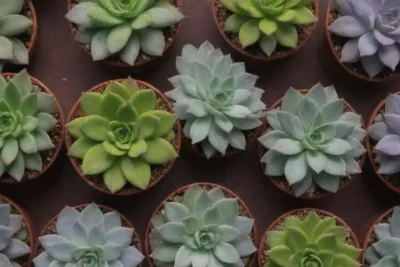
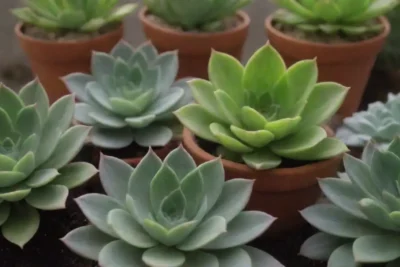
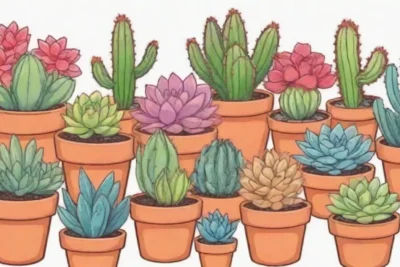
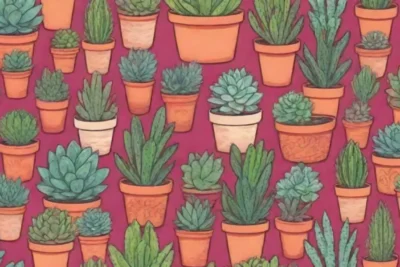
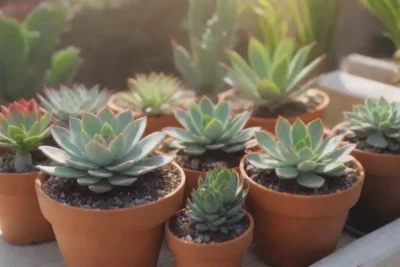
You Must Read